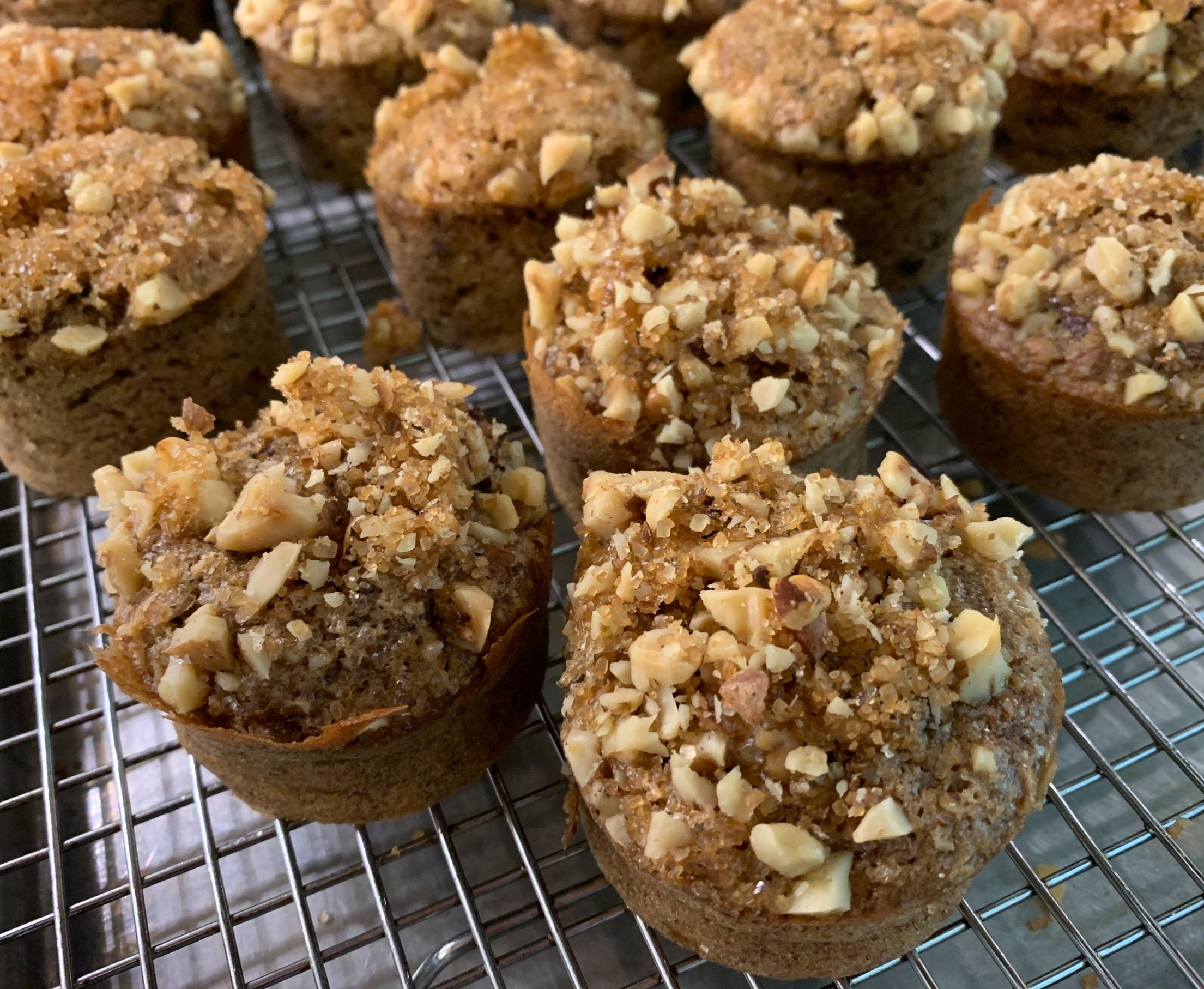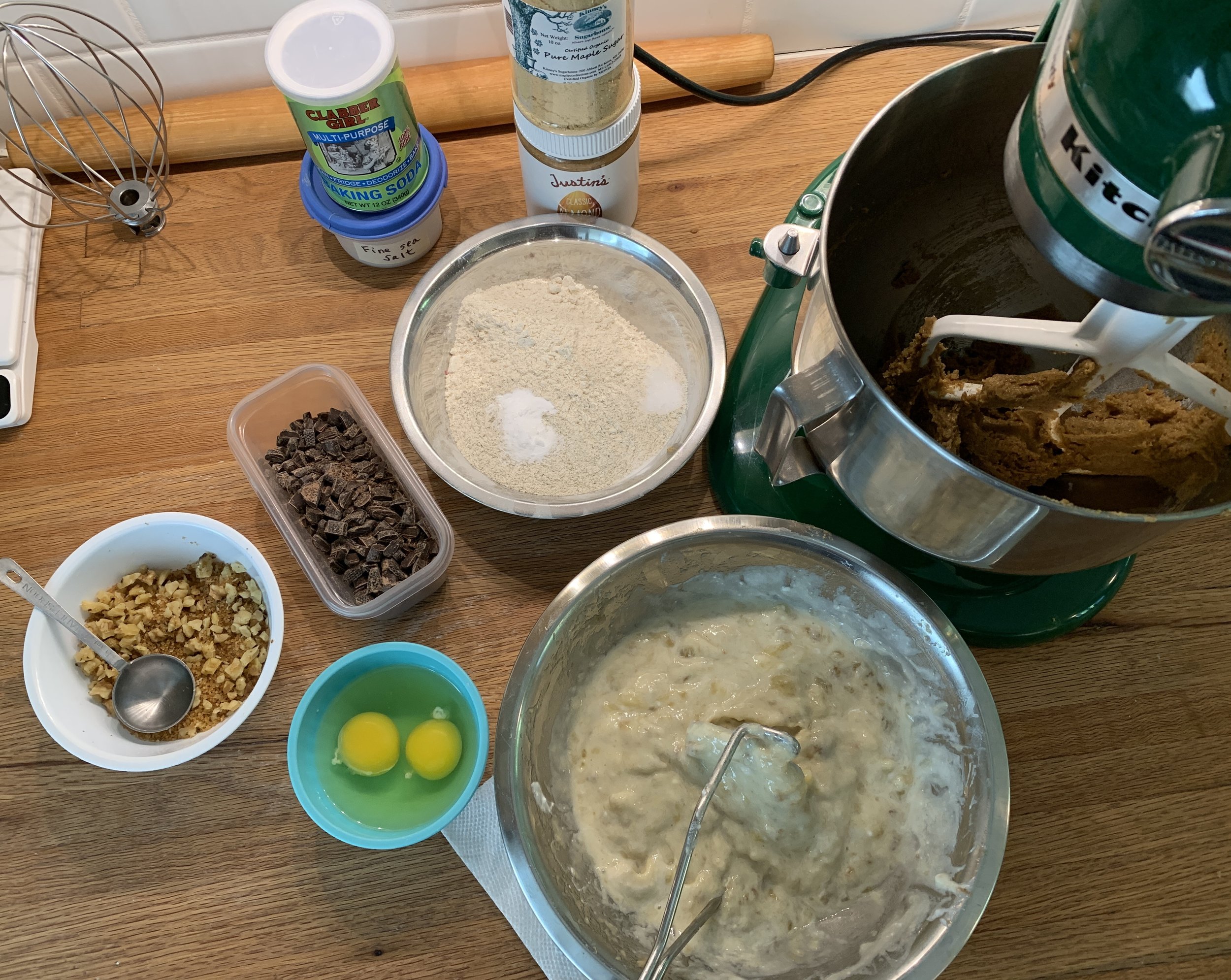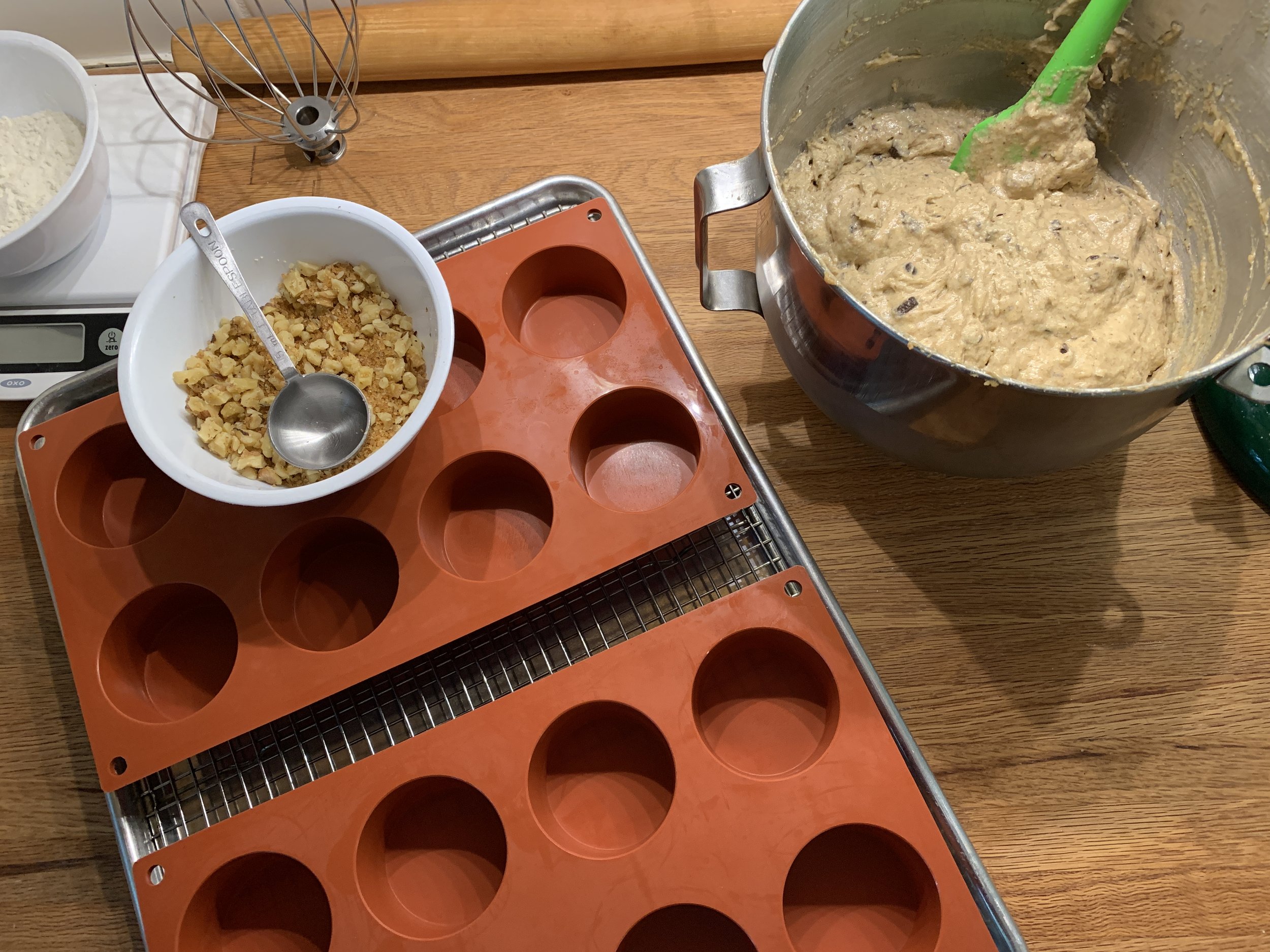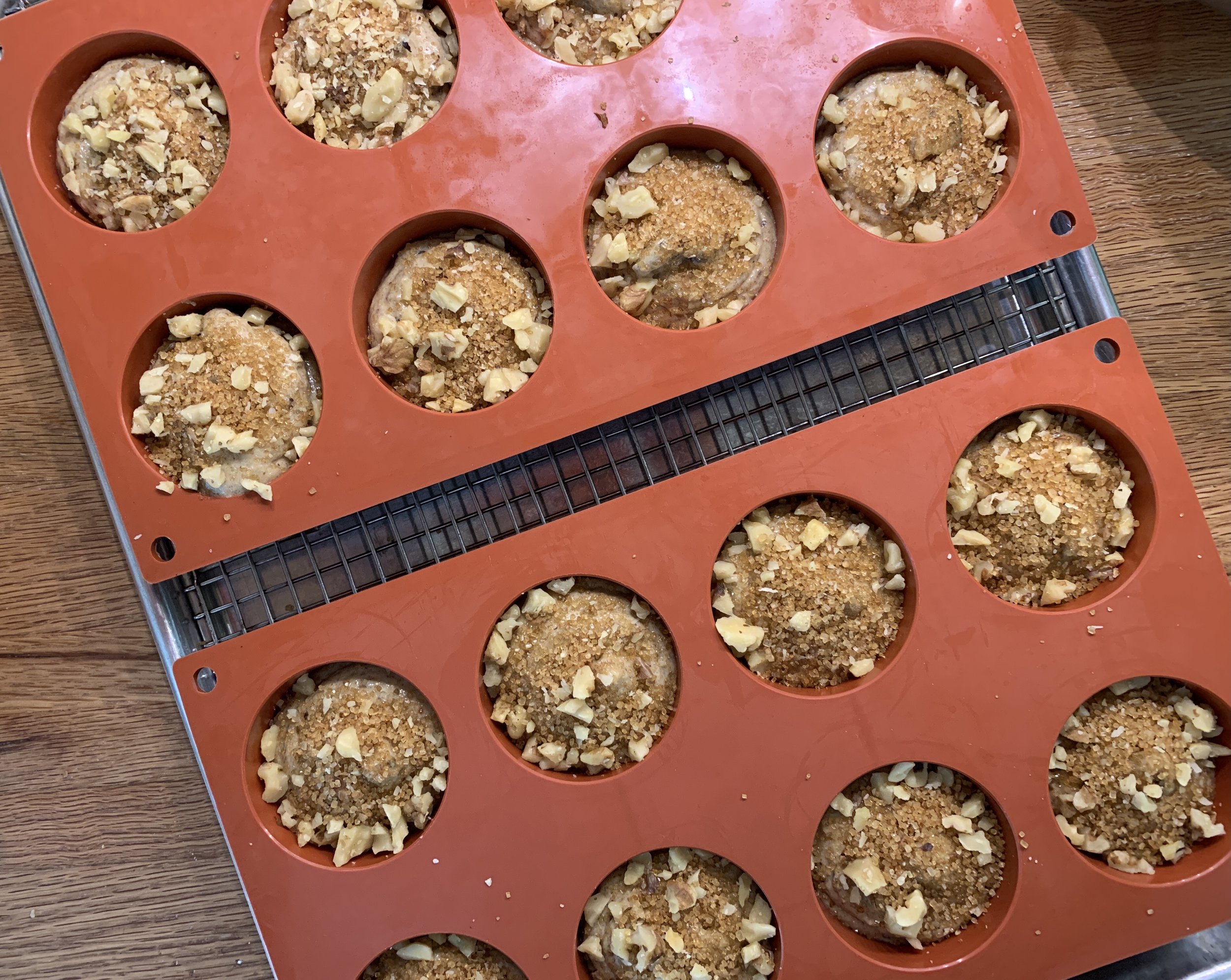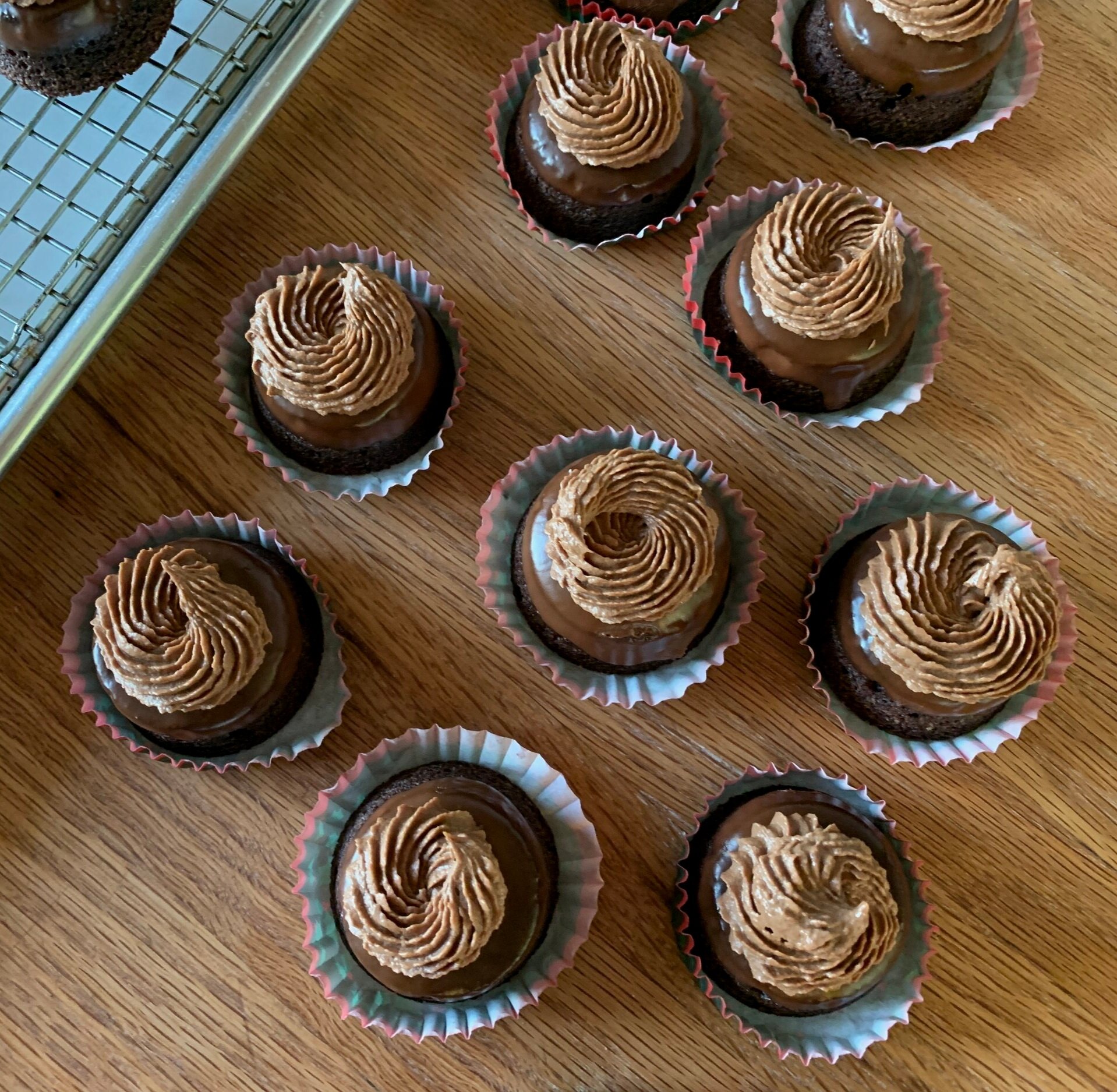Banana rye walnut chocolate chunk cakes
/I learned something about bananas some years back. Once they’re ripe and you’re not ready to eat them right then and there, peel ’em, chunk them up and freeze them! You can then use them in smoothies, cakes or quick breads where they lend a special creaminess to the batter. Yum.
This recipe calls for 4 medium bananas which I figured came to about 480 g of banana mash (~120 g per banana). I’m sure you can give or take the amount without negatively affecting the final result so don’t fuss too much as to the exact quantity of said banana.
This is my take on banana rye bread from Brontë Aurell’s book “Brontë at Home - baking from the Scandi Kitchen”. I’ve made these babies a bunch of times and realized that I’ve never written about them. I’ve done variations subbing maple sugar (thanks sister Joyce!) for some of the brown sugar, subbing ground oats and/or whole wheat pastry flour for some of the all purpose flour, adding in chopped toasted nuts like hazelnuts or walnuts, adding chocolate chunks and topping with a nutty streusel. So moist. All good.
Here’s the recipe (including some of the variations I’ve made) and my mise for this version in the image below. It’s a pretty straight forward cake batter - mashed banana, yogurt, lemon juice and vanilla in a separate bowl; dry ingredients in another bowl; cream butter/sugar, add egg then add wet/dry alternating. Basic right?
In this case I’m also adding 170 g / 6 ounces chopped chocolate to the batter and topping with chopped walnuts and raw sugar for a bit of crunch.
You can bake these cakes in buttered/floured muffin tins but I prefer (and love) my Silikomart silicone flexi-molds - so many different shapes and sizes. This time I’m using the 8-well SF028, rather like a standard muffin size. The recipe yield is about 20 cakes using that particular mold. I also often use the 11-well SF022 which is a tad larger than a standard mini-muffin pan - I get about 33 cakes with that mold. NOTE - I have several of each mold.
I place the molds on a wire grid on a half sheet pan - that allows for better air circulation and more even baking.
You can find a large selection of Silikomart molds at bakedeco.com. By the way - I have no affiliate links with any companies - I simply like sharing the things I find useful and fun in the baking kitchen!
Heat the oven to 350ºF. Fill molds about 3/4 full. Sprinkle chopped walnuts and raw sugar on top.
Bake 20 minutes or so - always check about half way through. Your oven may take longer than mine. You want the center to feel set and just the barest hint of a moist crumb on a tester.
Let them rest about 10 minutes then gently turn them out onto a wire cooling rack. If you can’t wait, try one a bit warm when the chocolate will still be gooey, otherwise cool to room temp and enjoy.
These freeze well too. Even better!
Let me add my official Happy New Year to all of you. Time for new projects and, as always, staying active and keeping our collective chins up. OK.

